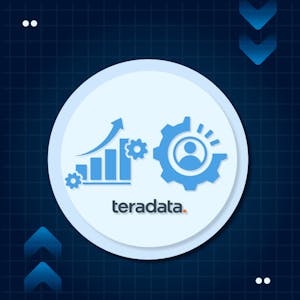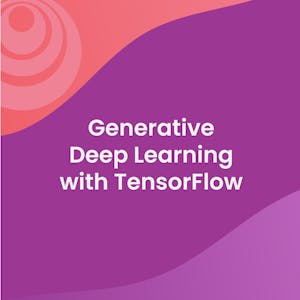Performance Optimization and Utilities in Teradata
About this Course
Course Description: Performance Optimization and Utilities in Teradata is a comprehensive course aimed at enhancing participants\' skills in optimizing database performance and utilizing Teradata utilities effectively. The course is divided into three modules, covering advanced database optimization techniques, Teradata utilities overview, and implementing Teradata solutions. Module 1: Database Optimization Techniques Module 1 focuses on advanced database objects and performance optimization strategies. In Lesson 1, \"Advanced Database Objects and Performance Optimization,\" participants will explore views, macros, stored procedures, and temporary tables, learning how to leverage these objects for performance enhancement. Lesson 2, \"Performance Tuning,\" dives into techniques such as collecting statistics, analyzing explain plans, troubleshooting spool space issues, and efficiently managing temporary tables. Module 2: Teradata Utilities Overview Module 2 provides an overview of essential Teradata utilities for data loading, extraction, and manipulation. In Lesson 1, \"Teradata Utilities - FastLoad, MultiLoad, BTEQ,\" participants will learn how to use FastLoad for fast data loading, restart failed FastLoad jobs, utilize MultiLoad for bulk data operations, and leverage BTEQ for data import/export tasks. Lesson 2, \"Teradata Utilities - FastExport, TPT,\" covers FastExport for efficient data export, Teradata Parallel Transporter (TPT) for enhanced data loading and unloading, and TPT Selector for data manipulation tasks. Module 3: Implementing Teradata Solutions Module 3 focuses on designing, implementing, and future-proofing Teradata solutions. In Lesson 1, \"Designing and Implementing Teradata Solutions,\" participants will explore solution design best practices, implementation strategies, troubleshooting common issues, and real-world implementation examples. Lesson 2, \"Future Trends in Teradata Technology,\" examines the evolution of Teradata, emerging technologies and trends, integration with other technologies, and strategies for preparing for future Teradata developments. Learning Objectives: 1. Define: Identify and explain advanced database objects and optimization techniques in Teradata. 2. Explain: Describe performance tuning techniques and Teradata utilities for efficient data management. 3. Analyze: Evaluate solution design principles, implementation best practices, and troubleshooting strategies in Teradata. 4. Apply: Utilize Teradata utilities effectively for data loading, extraction, and manipulation, and prepare for future trends in Teradata technology. Target Audience: This course is designed for database administrators, data engineers, solution architects, and anyone involved in optimizing database performance and utilizing Teradata utilities. It is suitable for intermediate to advanced users seeking to enhance their skills in performance optimization, database management, and future-proofing Teradata solutions.Created by: Board Infinity

Related Online Courses
Producing music is an incredibly creative process, and knowing the tools of the trade is essential in order to transmit the musical ideas in your head into the DAW in a creative and uninhibited... more
This Professional Certificate is intended to help you develop the job-ready skills and portfolio for an entry-level Business Intelligence (BI) or Data Warehousing Engineering position. Throughout... more
In this course, you will: a) Learn neural style transfer using transfer learning: extract the content of an image (eg. swan), and the style of a painting (eg. cubist or impressionist), and combine... more
This course provides a beginner\'s guide to using Maven and SonarQube in a DevOps environment. You\'ll start with an introduction to Maven, learning to set up environments on Windows and Linux and... more
This course provides a comprehensive overview of cloud computing security principles and practices, applicable across major cloud platforms such as AWS, Azure, and Google Cloud. Students will learn... more








